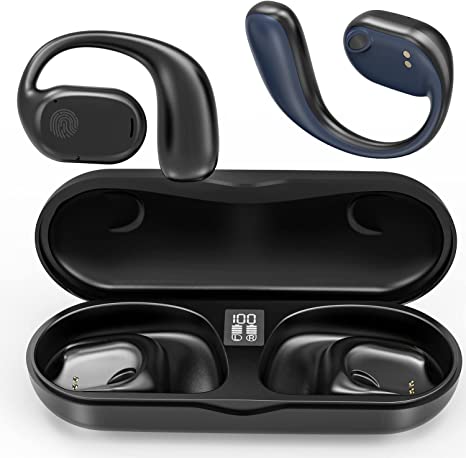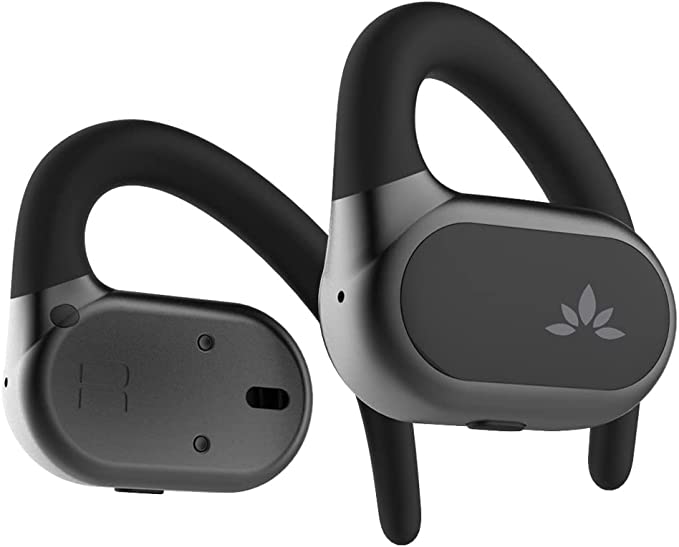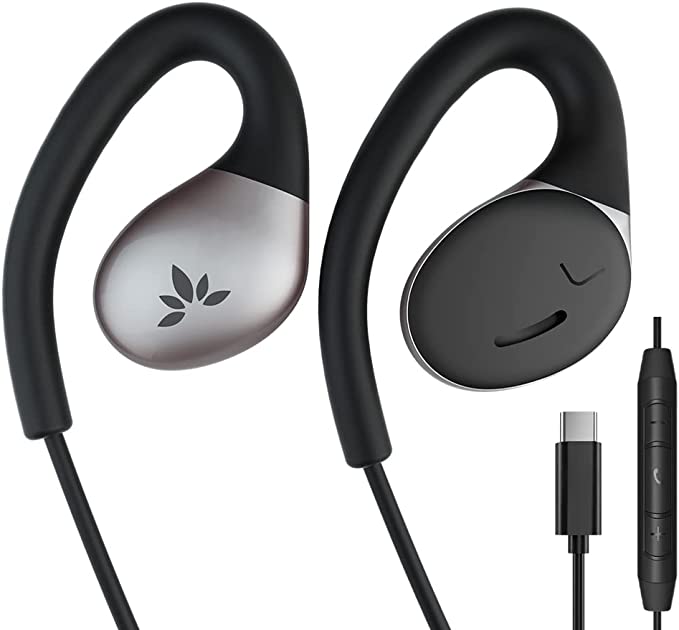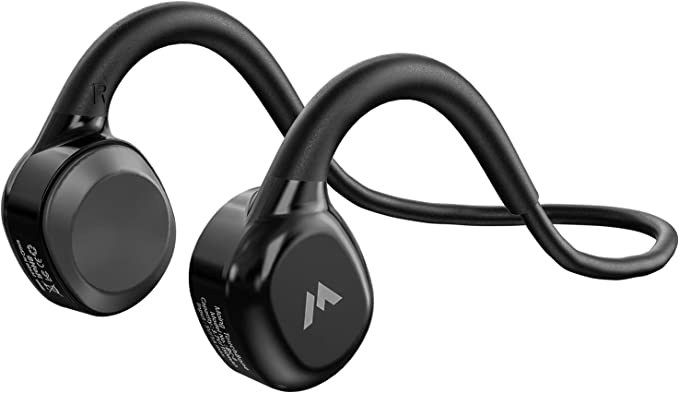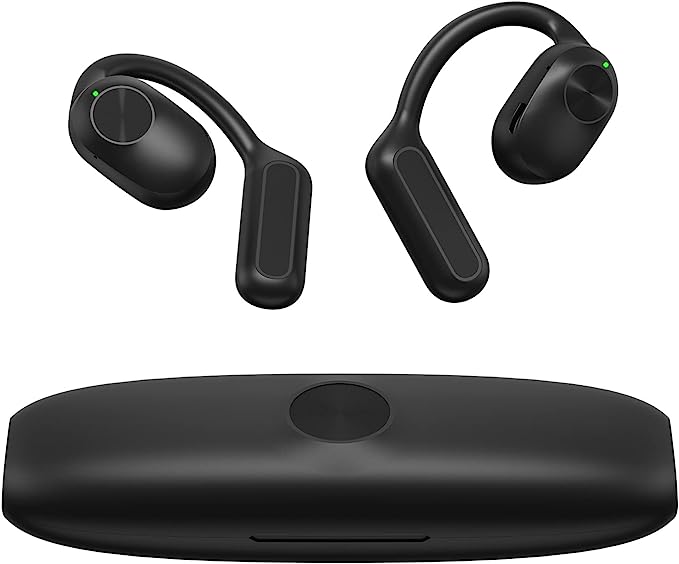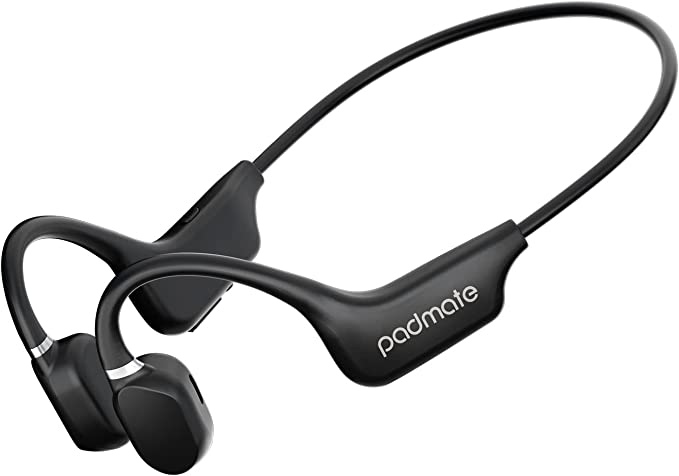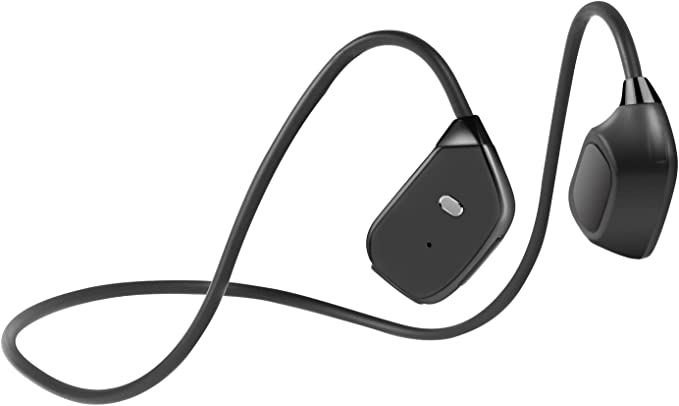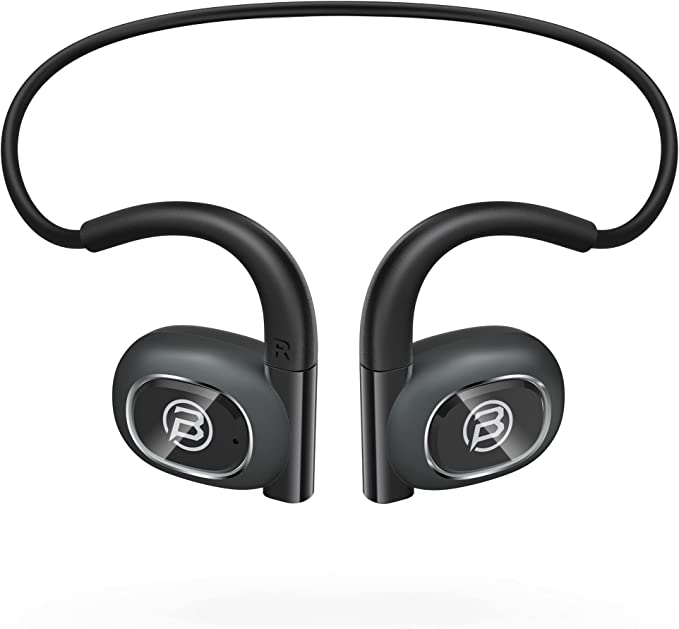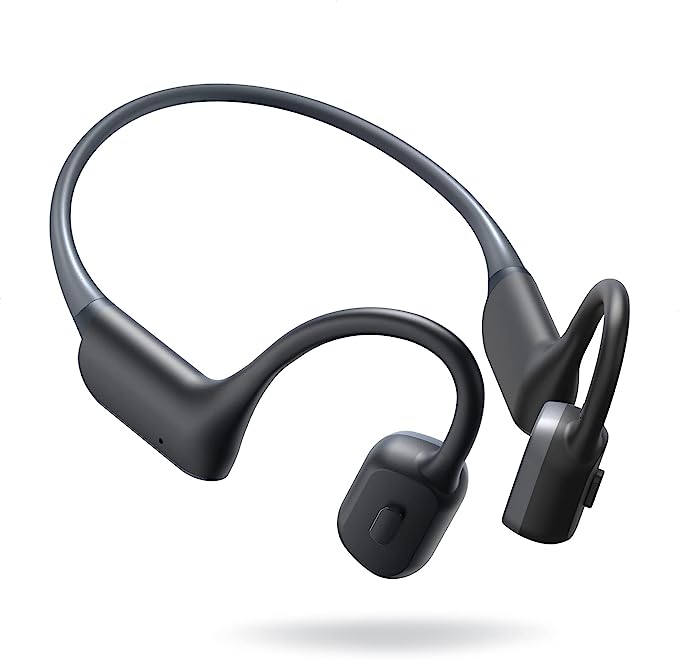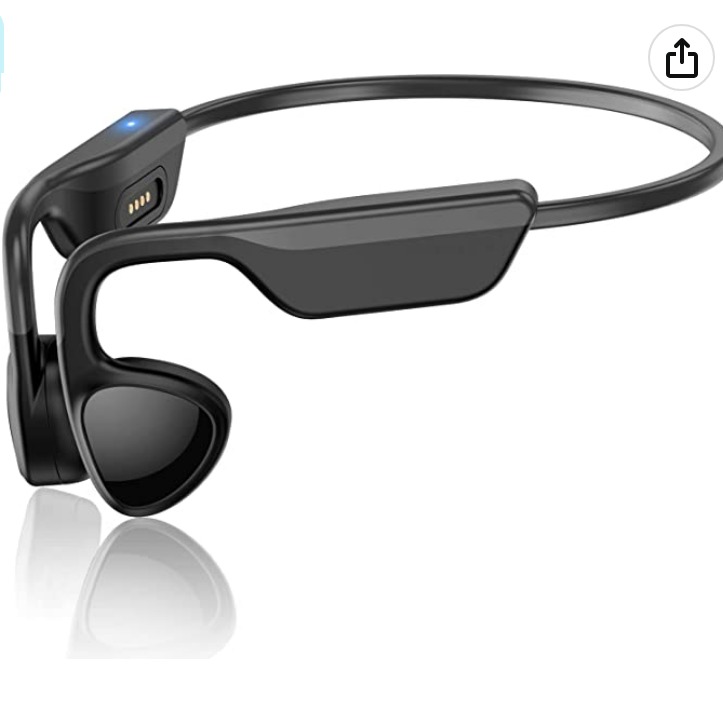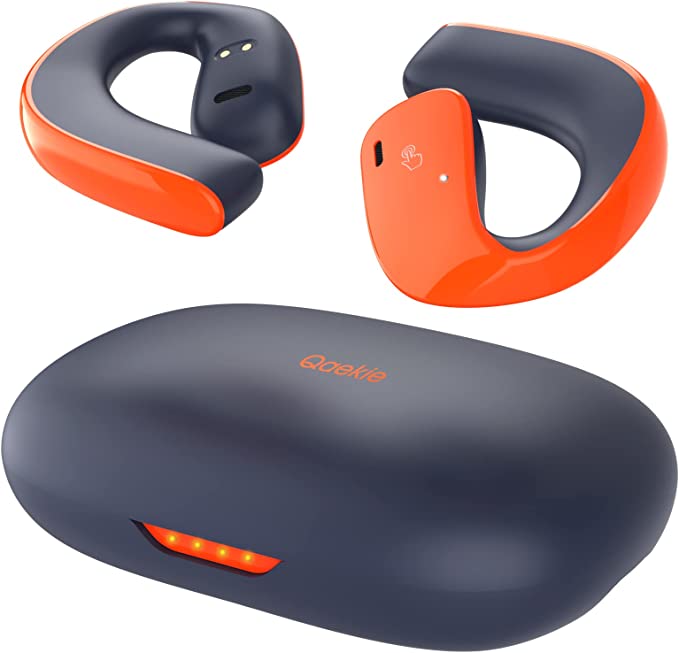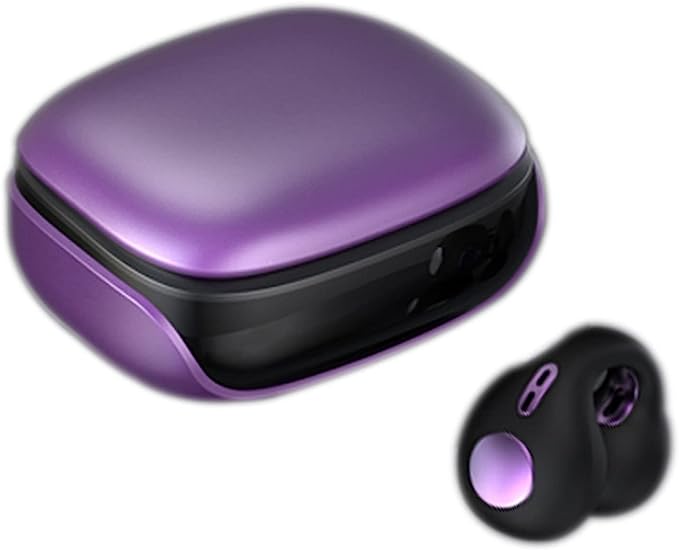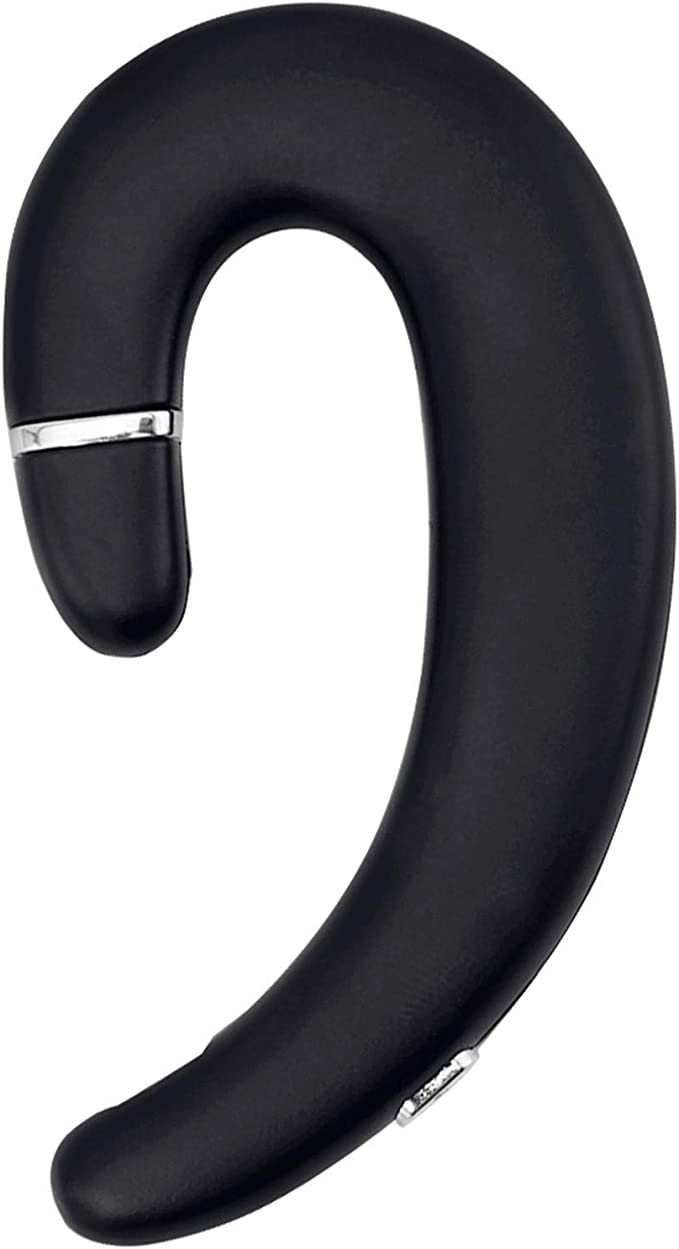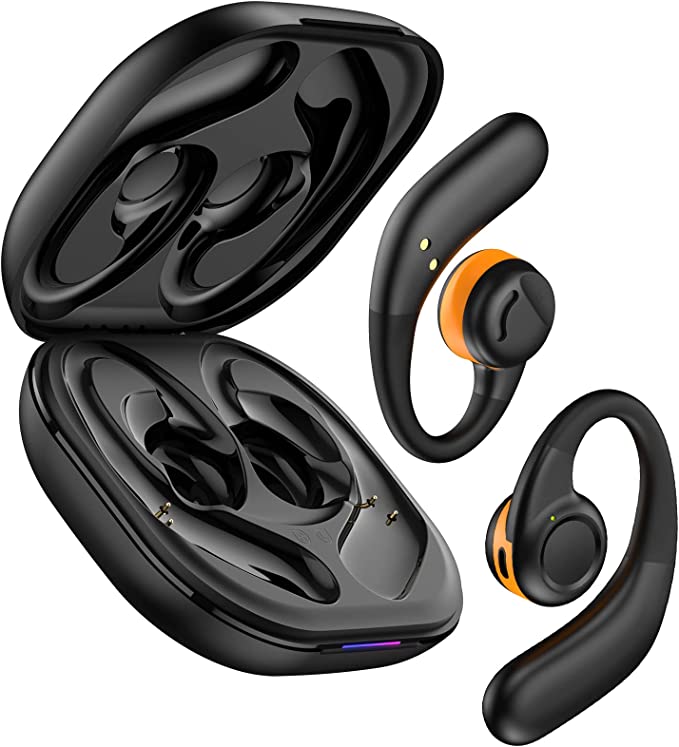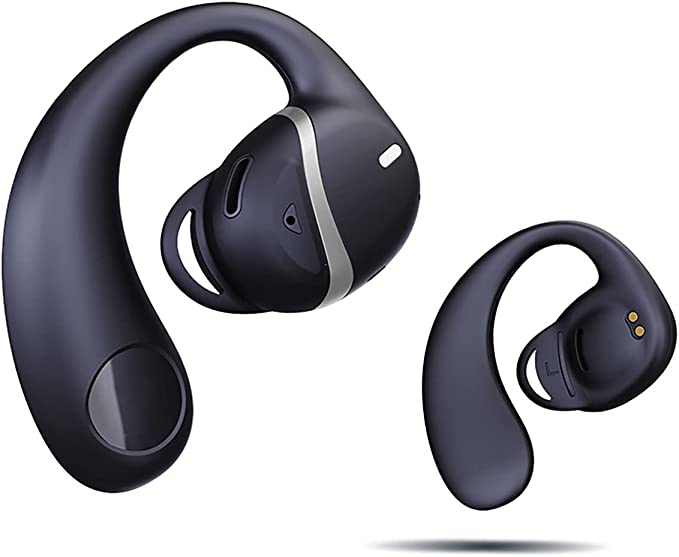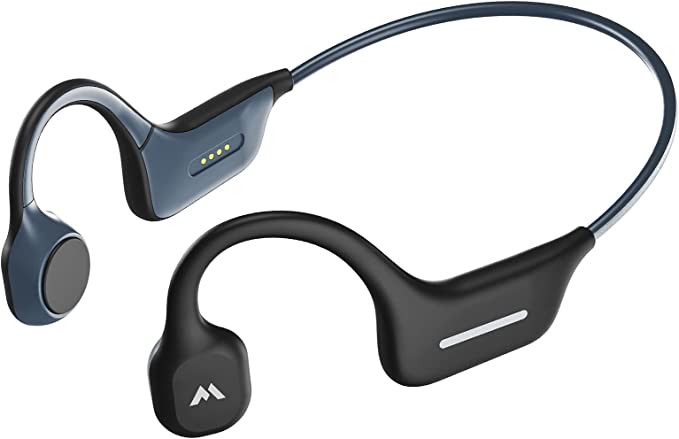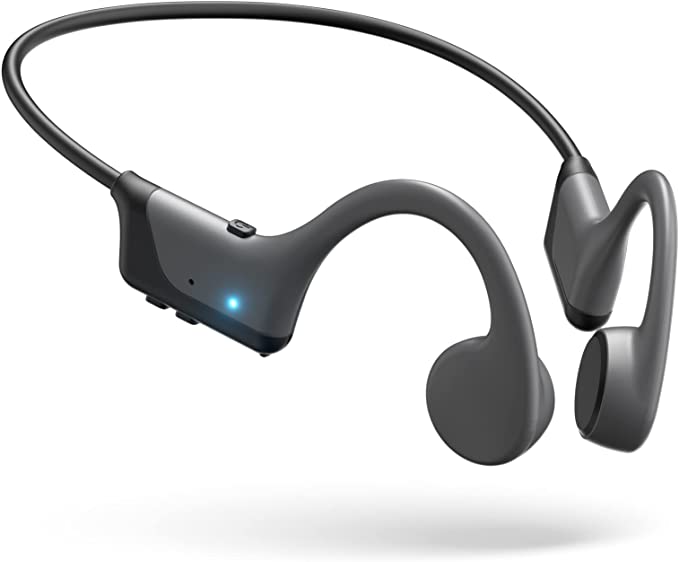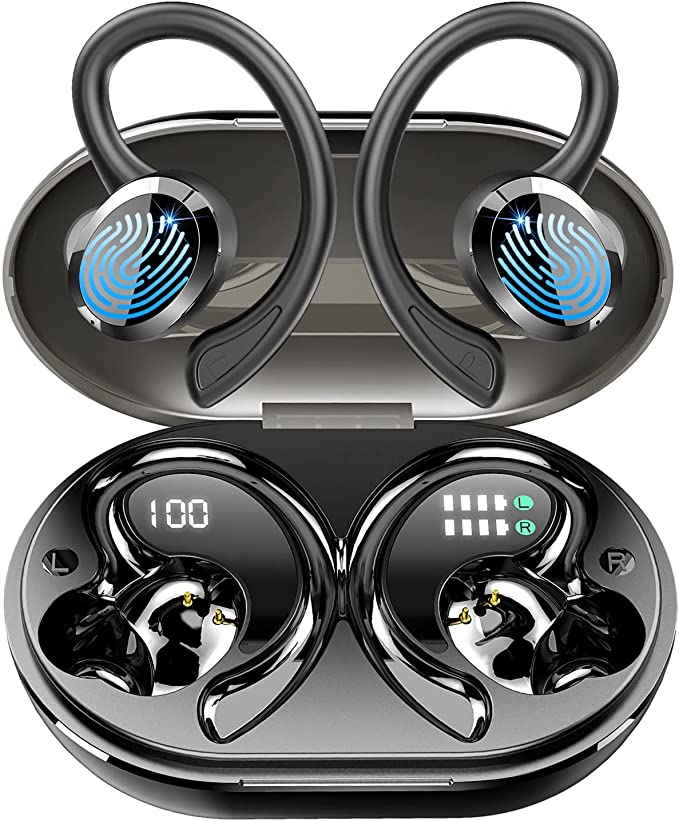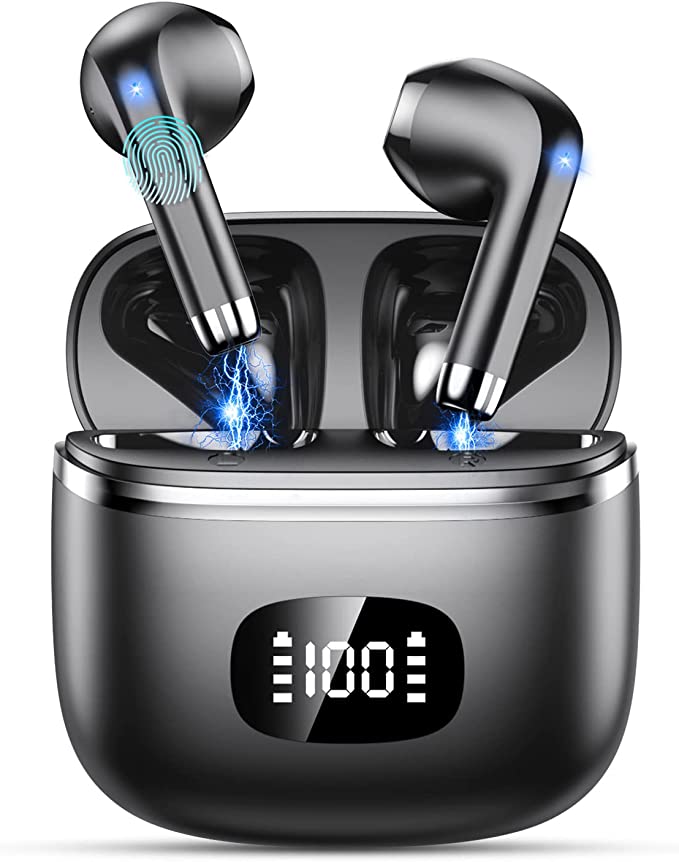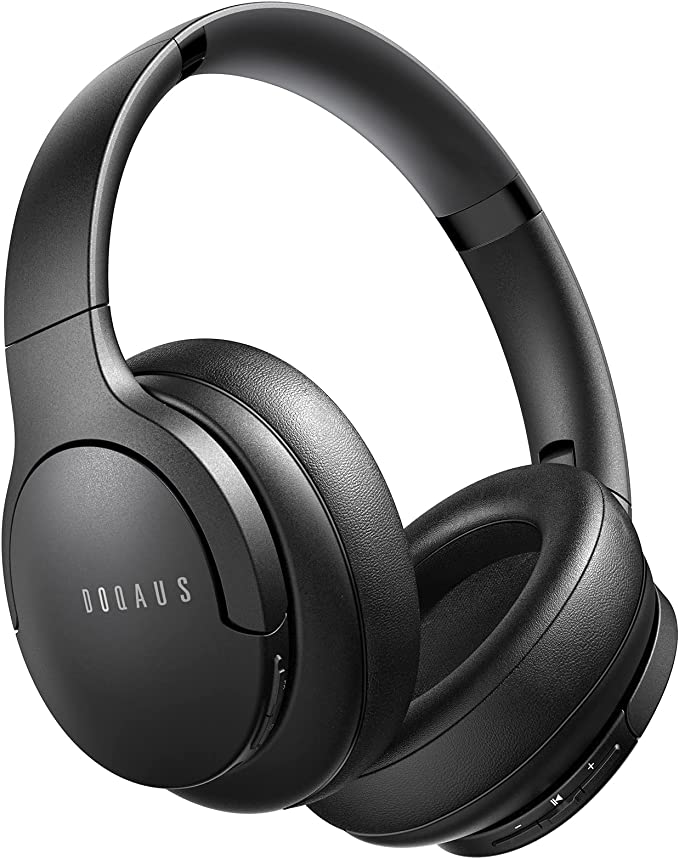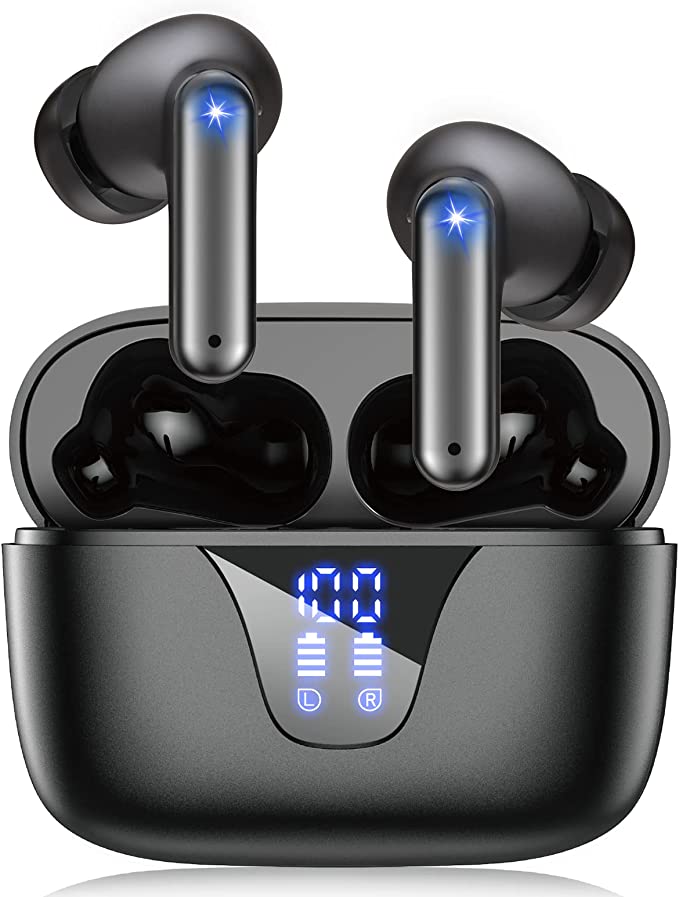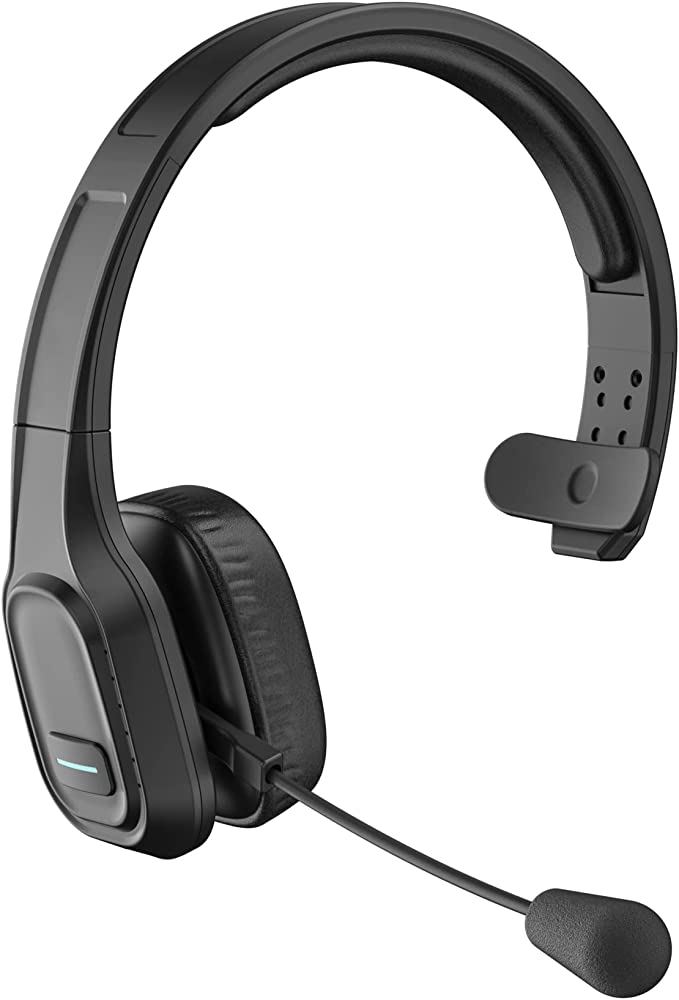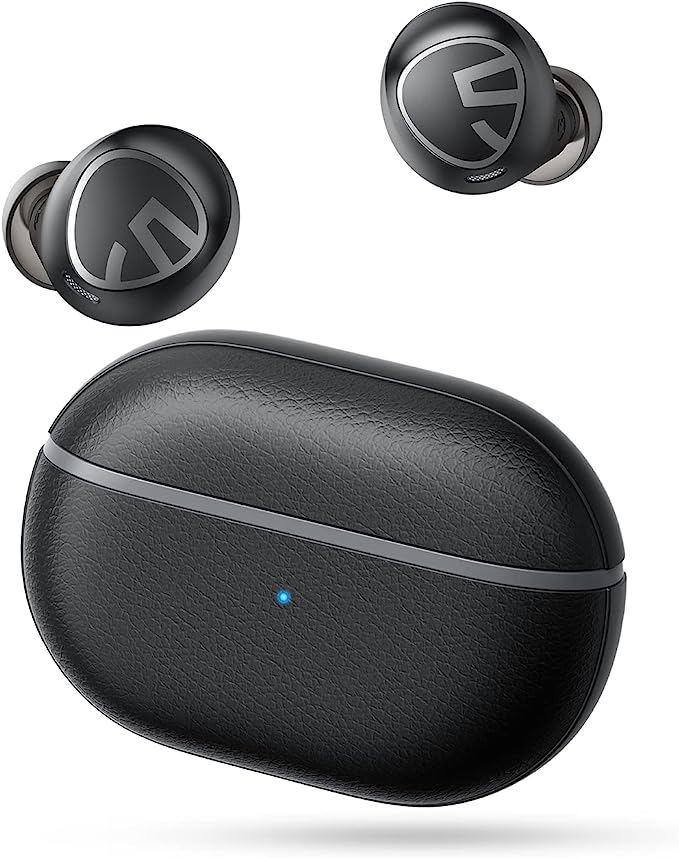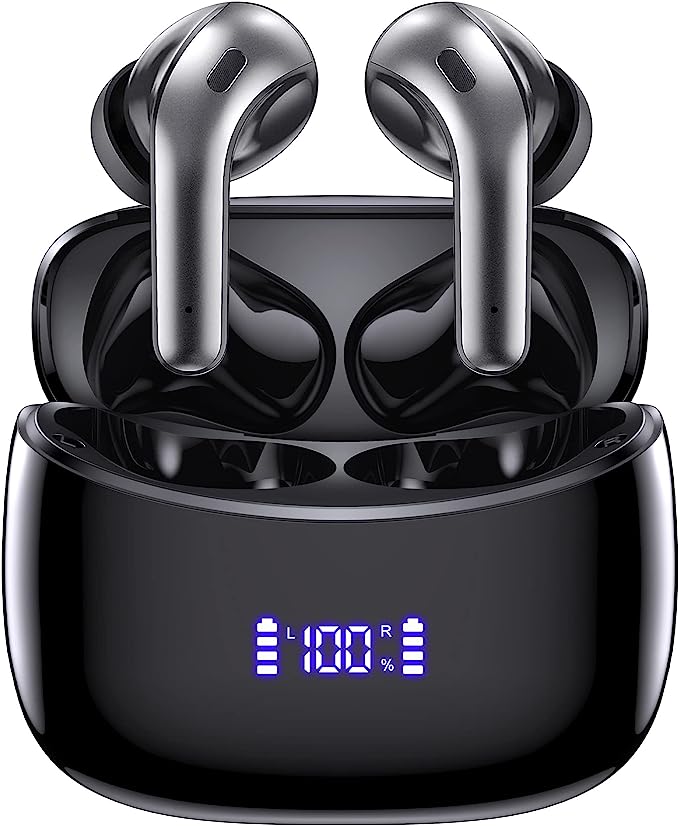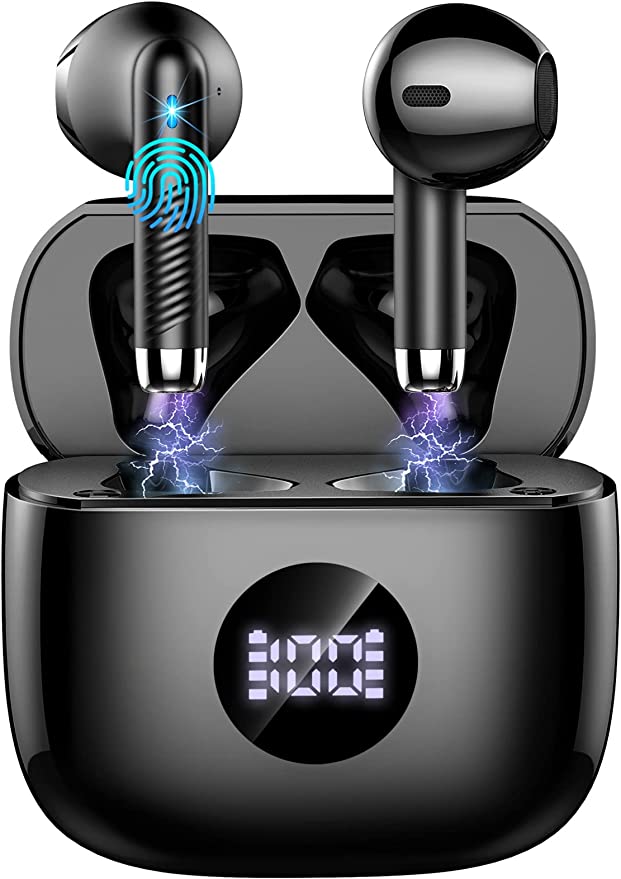Avantree Medley Air: Clear TV Dialogue & Open-Ear Comfort with Air Conduction Science
Update on April 13, 2025, 12:56 p.m.
It’s a scene played out in countless living rooms across North America: the television flickers, but the accompanying sound becomes a source of quiet contention. One person strains to catch mumbled dialogue, inching the volume ever higher, while another winces, finding the booming sound effects or swelling music overwhelming. Finding that perfect audio balance – clear comprehension for one, comfortable listening for all – can feel like an elusive goal. Often, simply turning up the volume isn’t the answer; it just makes everything louder, not necessarily clearer.
This common household dilemma highlights the need for audio solutions tailored specifically for the nuances of TV watching, going beyond mere amplification. Enter the Avantree Medley Air, a wireless headphone system designed with a distinct philosophy: prioritizing vocal clarity and situational awareness through a unique open-ear approach. But what does that really mean, and how does it work? Let’s delve into the science and design thinking behind this system, moving beyond marketing claims to understand its potential place in your home entertainment setup.

Hearing is Believing, and Perceiving – The Open-Ear Experience
The first thing you might notice about the Medley Air headphones is their form factor. They aren’t tiny buds disappearing into your ear canals, nor are they large, isolating cups that engulf your entire ear. Instead, they employ an Open-Ear Design. Picture lightweight pads resting gently on your ears, leaving your ear canals unobstructed.
This design choice is fundamentally linked to how we naturally hear. The primary way sound reaches our brain is through Air Conduction. Sound waves travel through the air, are funneled by the outer ear into the ear canal, vibrate the eardrum, and are then processed by the middle and inner ear. The Medley Air works with this natural process. By not blocking the ear canal, it allows sound from the headphones to travel this path while also permitting ambient sounds from your surroundings to reach your eardrums unimpeded. (This differs from bone conduction technology, which bypasses the outer and middle ear to send vibrations directly through the skull bones to the inner ear – a different approach with its own set of characteristics).
Why is this open approach beneficial for TV listening? Two key advantages emerge:
-
Staying Tuned to Your World: The most immediate benefit is environmental awareness. Because your ears aren’t sealed off, you remain connected to your immediate surroundings. You can hear the doorbell ring, the phone chime, a kettle whistling in the kitchen, or a family member calling your name from another room. This is not just convenient; it can be a matter of safety and maintaining social connection, especially important for those who might otherwise feel isolated by traditional headphones.
-
Comfort for the Long Haul: Open-ear designs often translate to greater physical comfort, particularly during extended use like movie marathons or binge-watching sessions. The Medley Air headphones are notably lightweight, tipping the scales at a mere 42 grams according to the specifications. This minimal weight, combined with the on-ear placement that avoids pressure inside the ear canal, aims for a “pressure-free fit.” This aspect can be particularly welcome for individuals who wear glasses, as there are no bulky cups pressing the glasses’ arms against the head, or for those using certain types of hearing aids, where an earbud might interfere.
However, it’s important to approach comfort with a degree of nuance. While the design intends to be comfortable, fit is inherently subjective. The Medley Air features a fixed, non-adjustable band. While many users may find it perfectly comfortable, as suggested by some feedback snippets in the source material (mentioning comfort even when lying down), others (as also noted in feedback) might find the fit less than ideal depending on head size and shape, or encounter issues with the band contacting furniture when reclining. The lack of plush padding, a consequence of its lightweight, minimalist design, is also a factor in individual comfort perception.

Decoding the Dialogue – The Quest for Vocal Clarity
Perhaps the most frustrating aspect of poor TV audio is struggling to understand what characters are saying. Dialogue can easily get lost amidst dramatic musical scores, loud action sequences, or even just poorly mixed background sounds. The Medley Air directly targets this issue, positioning Clear Dialogue as a primary feature.
To understand how it aims to achieve this, we need a quick dip into sound science. Sound is composed of waves vibrating at different speeds, measured in Hertz (Hz). We perceive these different frequencies as pitch. Low frequencies create deep sounds (bass – think explosions, thunder, bass guitars), while high frequencies produce higher-pitched sounds (treble – think cymbals, birdsong, and crucially, the sharp sounds in human speech).
The intelligibility of speech, especially consonants like ‘s’, ‘f’, ‘t’, and ‘k’ which give words their definition, largely resides in the higher frequency range (treble). Unfortunately, age-related hearing changes often affect the perception of these higher frequencies first, making it harder to distinguish speech sounds clearly, even if overall volume seems adequate.
The Avantree Medley Air, according to its description, is specifically “designed to enhance treble levels.” By boosting these critical upper frequencies, the system aims to lift dialogue out from the background noise, making voices sound more distinct and easier to follow. This targeted tuning is likely why the product information emphasizes that while it “may not provide the most powerful bass,” its strength lies in “overall sound clarity.” It’s a deliberate engineering choice prioritizing speech comprehension over room-shaking bass – a trade-off aimed squarely at the core TV listening challenge.
The goal, encapsulated in the phrase “Never Miss a Word,” should be interpreted as striving for significantly improved dialogue intelligibility for many users. It’s about making the plot easier to follow and reducing the listening effort required.
However, as with comfort, individual results can vary, especially concerning hearing loss. While effective for many experiencing mild difficulties, feedback mentioned in the source material suggests that individuals with more significant hearing impairment found the maximum volume output of the headphones insufficient for their needs, even if the sound quality was perceived as good. This highlights that while clarity is enhanced, the amplification ceiling might be a limitation for some potential users.

Untangling the Wires – Simplicity in Setup and Connection
Introducing new technology into the home can sometimes feel like a chore, involving complex pairing procedures and compatibility headaches. Avantree appears to have focused on streamlining the setup process for the Medley Air, aiming for a “plug and play” experience.
Central to this simplicity is the included Transmitter Base. This unit serves a dual purpose: it acts as a convenient charging dock for the headphones when not in use, and more importantly, it functions as the Bluetooth transmitter. It takes the audio signal directly from your television and wirelessly beams it to the paired Medley Air headphones.
The setup described is straightforward:
1. Connect the transmitter base to a power source using the provided USB-C cable.
2. Connect the transmitter base to your TV’s audio output port. The system offers broad compatibility, including cables for Digital Optical (Toslink), AUX (3.5mm headphone jack), and RCA (the red and white analog ports common on older equipment).
3. Power on both the transmitter and the headphones. The system is designed so they should automatically find each other and pair without needing you to navigate complex Bluetooth menus.
This broad compatibility with various audio outputs ensures the Medley Air can work with a vast range of televisions, from older non-smart models to the latest displays. There is one important technical note mentioned in the setup guidance: you’ll likely need to go into your TV’s audio settings menu and change the digital audio output format to “PCM” or “Stereo.” Why? PCM (Pulse-Code Modulation) is a standard, uncompressed digital audio format that devices like this transmitter can easily understand. Other formats like Dolby Digital or DTS often require specific decoders that the transmitter may not have, leading to silence or noise if not set correctly. Setting your TV to output PCM ensures a clean, compatible signal reaches the Medley Air transmitter.
Once connected, the system uses Bluetooth technology to provide wireless freedom. The stated operating range is up to 100 feet (approximately 30 meters). It’s worth remembering that this is typically an “open field” or “line-of-sight” measurement. Indoors, walls, furniture, and even interference from other wireless devices (like microwaves or Wi-Fi routers) can reduce the effective range. However, for typical living room setups, the range should generally be sufficient.

Sharing the Soundstage – Passthrough and Dual Listening
TV watching isn’t always a solitary activity, and Avantree has incorporated features into the Medley Air to accommodate shared viewing scenarios gracefully.
The first is Soundbar Passthrough. This clever capability addresses a common issue: what happens to your existing soundbar or external speaker system when you plug in a headphone transmitter? With Passthrough, the audio signal entering the Medley Air transmitter (e.g., via the Optical input) can also be simultaneously routed out of the transmitter (via its Optical output) to your soundbar or AV receiver. Imagine it like an audio splitter: the sound goes two ways. This means one person can listen through the Medley Air headphones at their preferred volume, while others in the room can listen concurrently through the main sound system at a level comfortable for them. It elegantly solves the potential conflict and allows everyone to enjoy the show together, each with their optimal audio experience.
The second sharing feature is Dual Link. The Medley Air transmitter isn’t limited to just one pair of headphones. It has the capability to connect and transmit audio to up to two compatible Avantree wireless listening devices simultaneously (note: a second pair of headphones would need to be purchased separately). This is ideal for couples or housemates who both want to use wireless headphones for TV viewing. Importantly, the source material confirms that when two devices are connected, each user typically has independent volume control directly on their respective earbuds, allowing for truly personalized listening levels for both individuals. The Medley Air headphones themselves feature on-ear controls for adjusting volume and handling basic playback functions like play/pause.
Bringing It All Together: The Medley Air Experience
The Avantree Medley Air presents itself as more than just another pair of wireless headphones. It’s a purpose-built system designed to tackle specific, common frustrations associated with television audio. Its core strengths lie in a thoughtful combination of features:
- Targeted Dialogue Clarity: By focusing on enhancing the treble frequencies crucial for speech intelligibility, it aims to make conversations significantly easier to understand.
- Open-Ear Awareness and Comfort: The non-occluding, lightweight (42g) design allows users to remain aware of their surroundings while offering potential comfort benefits, especially for eyeglass or hearing aid wearers.
- Simplified Setup and Use: The plug-and-play transmitter/dock and broad compatibility lower the technical barrier for many users.
- Flexible Sharing Options: Soundbar Passthrough and Dual Link capabilities facilitate harmonious shared viewing experiences.
It appears best suited for individuals who prioritize understanding TV dialogue clearly, value remaining aware of their environment while listening, seek a comfortable and lightweight on-ear fit (and are accepting of a fixed band design), and appreciate a straightforward setup process. It’s a potentially excellent solution for households where differing volume needs create friction, or where late-night viewing requires a considerate audio solution.
However, it’s equally important to understand its specific focus implies certain trade-offs, as indicated by the source material itself. Those seeking powerful, deep bass for cinematic impact might find its audio profile lacking. Individuals with severe hearing loss might find the maximum volume insufficient. And due to the fixed design, achieving a perfect, comfortable fit for every head shape cannot be guaranteed. The open design also inherently means some sound may leak out at higher volumes, potentially audible to someone very close by.
Ultimately, the Avantree Medley Air isn’t aiming to be the ultimate audiophile headphone, but rather a practical, user-friendly tool designed to solve distinct problems in the realm of everyday TV watching. By understanding the science behind its open-ear design and dialogue-focused tuning, potential users can better determine if it aligns with their specific needs and could bring a new level of clarity and peace to their living room soundscape.
[//]:(version:20250412 001)
